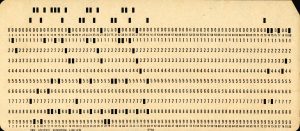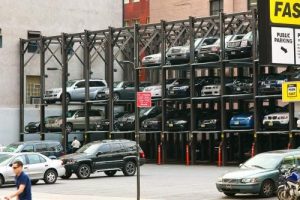
 Arthur Gardner was an electrician. Born in 1883, one year after Thomas Edison turned on the lights for 59 customers in Lower Manhattan, my grandfather was part of a new and rapidly growing occupation. He spent his workdays running wire through the homes of Chicago’s wealthy South Shore neighborhood. Electricity displaced the use of coal gas, which, in its turn, had displaced oil lamps and candles. Just as gas lighting propelled an expansion of industrial production and improved literacy, electricity—good for so much more than lighting—made vast new industries possible.
Arthur Gardner was an electrician. Born in 1883, one year after Thomas Edison turned on the lights for 59 customers in Lower Manhattan, my grandfather was part of a new and rapidly growing occupation. He spent his workdays running wire through the homes of Chicago’s wealthy South Shore neighborhood. Electricity displaced the use of coal gas, which, in its turn, had displaced oil lamps and candles. Just as gas lighting propelled an expansion of industrial production and improved literacy, electricity—good for so much more than lighting—made vast new industries possible.
Arthur raised a family of gearheads—amateur engineers who tinkered with every kind of technology. My father began a career in computers in 1960, taking night classes in computer programming languages throughout my childhood. Coding books—FORTAN, COBOL, RPG—littered our basement. When our car needed winter “ballast” for snowy streets, we threw in 8 or 10 boxes of IBM cards. I still have a few.
Dad’s IBM 360 displaced a roomful of payroll clerks but spurred many new products and services. Today, 4 million U.S. workers are directly employed in computer-related occupations, earning an average annual wage of $86,000.
Electricians almost certainly  outnumbered displaced gas workers in my grandfather’s time. The balance of job creation & job destruction from computerization is not so clear. Manufacturing employment fell from over a third of private employment in the 1950s to about a tenth today. Seven million manufacturing jobs, 37%, have been lost since the sector’s peak employment in 1979. About 12 million remain.
outnumbered displaced gas workers in my grandfather’s time. The balance of job creation & job destruction from computerization is not so clear. Manufacturing employment fell from over a third of private employment in the 1950s to about a tenth today. Seven million manufacturing jobs, 37%, have been lost since the sector’s peak employment in 1979. About 12 million remain.
Some of these manufacturing jobs were lost to global competition but a substantial share were lost to productivity-enhancing computerization. Despite job losses, U.S. industrial production has more than doubled since 1979 and it continues to rise.
Historically, disruptive technology has spurred more job creation than destruction, but this is hardly a natural law. Let’s consider the employment risk of one of the most exciting developments, self-driving vehicles.
Uber made the headlines recently when it unleashed a fleet of self-driving taxis in Pittsburgh. Whether or not Uber succeeds with its modified Ford Fusions, Google has demonstrated “proof of concept” with 2 million miles of nearly flawless performance. The question is no longer “if autonomous vehicles?” but “when?”
Uber’s trial suggests that the first occupation at risk could be the nation’s 181,000 taxi drivers. Uber and Lyft have shown that this is a sector ripe for disruption. Already under siege by your cousin Amanda and her Honda Civic, taxi drivers must now fear cars with no driver at all. Relative to the size of the nation’s labor force, the loss of 181,000 taxi jobs isn’t much of a threat. Nor are these high paying jobs, averaging only $26,000 annually. Total earnings are nearly $5 billion, however.
If Uber’s taxis can safely navigate busy city streets, its newly-acquired Otto division hopes to take to the open road. Trucks haul 70% of America’s freight, over 9 billion tons each year. IHS Global Insight and the American Trucking Association forecast growth of nearly 30% by 2026. And they predict that the number of trucks will grow from 3.6 million today to about 4 million.
But there’s a problem. There aren’t enough drivers. One reason could be rules that limit the number of hours a driver can be on the road. A trucker can drive no more than 11 hours in 14, which must be followed by a rest period of at least 10 hours. Within any 8-day period, drivers are limited to 70 hours. These rules help keep the road safe but can leave a rig worth $200,000 idling for 122 hours in that 8-day period.
Enter autonomous trucks. Except for loading and unloading, truckers spend most of their time driving at a steady speed for hours on end. The greatest risk to trucking, truckers and those of us who share the road with them is fatigue. Otto’s sleepless technology is already being tested.
 Now it’s the jobs of 1.7 million heavy and tractor-trailer truck drivers that are at risk. With average earnings of $42,000, their annual payroll is over $70 billion. Once the technology is proven & legal, the return on investment for trucks will be irresistible. As Otto points out, computer-driven trucks are likely to be a safer way to ship freight. The federal Department of Transportation’s Fatality Analysis Reporting System reports 3,660 fatal deaths in accidents involving big trucks in 2014. No surprise—68% of the people who died were in cars, not the truck. It will be hard to oppose cheaper AND safer.
Now it’s the jobs of 1.7 million heavy and tractor-trailer truck drivers that are at risk. With average earnings of $42,000, their annual payroll is over $70 billion. Once the technology is proven & legal, the return on investment for trucks will be irresistible. As Otto points out, computer-driven trucks are likely to be a safer way to ship freight. The federal Department of Transportation’s Fatality Analysis Reporting System reports 3,660 fatal deaths in accidents involving big trucks in 2014. No surprise—68% of the people who died were in cars, not the truck. It will be hard to oppose cheaper AND safer.
Self-driving cars will follow eventually. Ford, Chrysler, BMW, Toyota and Mercedes Benz already sell cars that can parallel park unaided. Does that say “proof of concept” to you?!
How many hours does your car sit idle each week? I ride my bicycle to work about half the time, so the car gets about 5 trips to my office in a typical week—maybe 2½ hours. Let’s double that for errands, recreation, etc. I travel for work on occasion but typically rent. So my little blue car sits on the driveway or in a parking lot, just chillin’!, for roughly 8,500 hours each year, 97% of the time. I’m unusual, sure. But even people who commute an hour to work each day leave their cars to age in place for more than 8,000 hours each year. Were autonomous taxis cheap and reliable, would we own our own cars? Count me out. At the very least, we’d be a one car family, not two.
If we don’t buy cars to sit unused 95% of the time, we shouldn’t need so many of them. What are the consequences for the nearly 1 million jobs in motor vehicle & parts manufacturing? What about the near 2 million working in motor vehicle and parts dealers?
 Finally, what will self-driving cars mean for the use of urban space? A quick search of PLUTO—New York City’s online land use database—shows that 121 acres in Manhattan are devoted to parking, despite this being the most expensive and transit oriented real estate in America. When we break the connection between the driver and “his” or “her” car, the need for parking near destinations becomes much less pressing. When unneeded, our autonomous taxis wait in distant lots until called.
Finally, what will self-driving cars mean for the use of urban space? A quick search of PLUTO—New York City’s online land use database—shows that 121 acres in Manhattan are devoted to parking, despite this being the most expensive and transit oriented real estate in America. When we break the connection between the driver and “his” or “her” car, the need for parking near destinations becomes much less pressing. When unneeded, our autonomous taxis wait in distant lots until called.
Will autonomous vehicles make America great again? We might have to check with the former truckers, cabbies and parking attendants. Talk about disruptive technology!